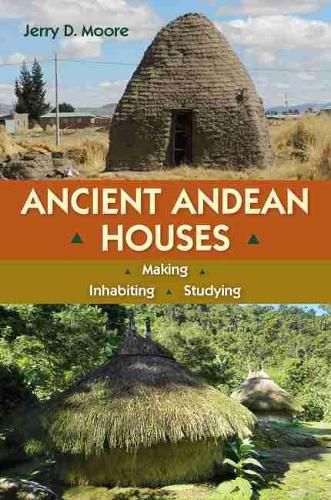Readings Newsletter
Become a Readings Member to make your shopping experience even easier.
Sign in or sign up for free!
You’re not far away from qualifying for FREE standard shipping within Australia
You’ve qualified for FREE standard shipping within Australia
The cart is loading…






This title is printed to order. This book may have been self-published. If so, we cannot guarantee the quality of the content. In the main most books will have gone through the editing process however some may not. We therefore suggest that you be aware of this before ordering this book. If in doubt check either the author or publisher’s details as we are unable to accept any returns unless they are faulty. Please contact us if you have any questions.
In Ancient Andean Houses, Jerry Moore offers an extensive survey of vernacular architecture from across the entire length of the Andes, drawing on ethnographic and archaeological information from Sierra Nevada de Santa Marta in Colombia to the Patagonia region of Argentina and Chile. This book explores the diverse ways ancient peoples made houses, the ways houses re-create culture, and new perspectives and methods for studying houses.In the first part of this multidimensional approach, Moore examines the construction of houses and how they shaped different spheres of household life, considering commonalities and variations among cultural traditions. In the second part, Moore discusses how domestic architecture serves as both constructed template and lived-in environment, expressing social relationships between men and women, adults and children, household members and the community, and the living and the dead. Finally, Moore critiques archaeological approaches to the subject, arguing for a far-reaching and engaged reassessment of how we study the houses and lives of people in the past.
Moore emphasizes that the house has always been a pivotal space around which complex human meanings orbit. This book demonstrates that the material traces of dwellings offer insight into significant questions regarding the development of sedentism, the spread of cultural traditions, and the emergence of social identities and inequalities.
$9.00 standard shipping within Australia
FREE standard shipping within Australia for orders over $100.00
Express & International shipping calculated at checkout
This title is printed to order. This book may have been self-published. If so, we cannot guarantee the quality of the content. In the main most books will have gone through the editing process however some may not. We therefore suggest that you be aware of this before ordering this book. If in doubt check either the author or publisher’s details as we are unable to accept any returns unless they are faulty. Please contact us if you have any questions.
In Ancient Andean Houses, Jerry Moore offers an extensive survey of vernacular architecture from across the entire length of the Andes, drawing on ethnographic and archaeological information from Sierra Nevada de Santa Marta in Colombia to the Patagonia region of Argentina and Chile. This book explores the diverse ways ancient peoples made houses, the ways houses re-create culture, and new perspectives and methods for studying houses.In the first part of this multidimensional approach, Moore examines the construction of houses and how they shaped different spheres of household life, considering commonalities and variations among cultural traditions. In the second part, Moore discusses how domestic architecture serves as both constructed template and lived-in environment, expressing social relationships between men and women, adults and children, household members and the community, and the living and the dead. Finally, Moore critiques archaeological approaches to the subject, arguing for a far-reaching and engaged reassessment of how we study the houses and lives of people in the past.
Moore emphasizes that the house has always been a pivotal space around which complex human meanings orbit. This book demonstrates that the material traces of dwellings offer insight into significant questions regarding the development of sedentism, the spread of cultural traditions, and the emergence of social identities and inequalities.